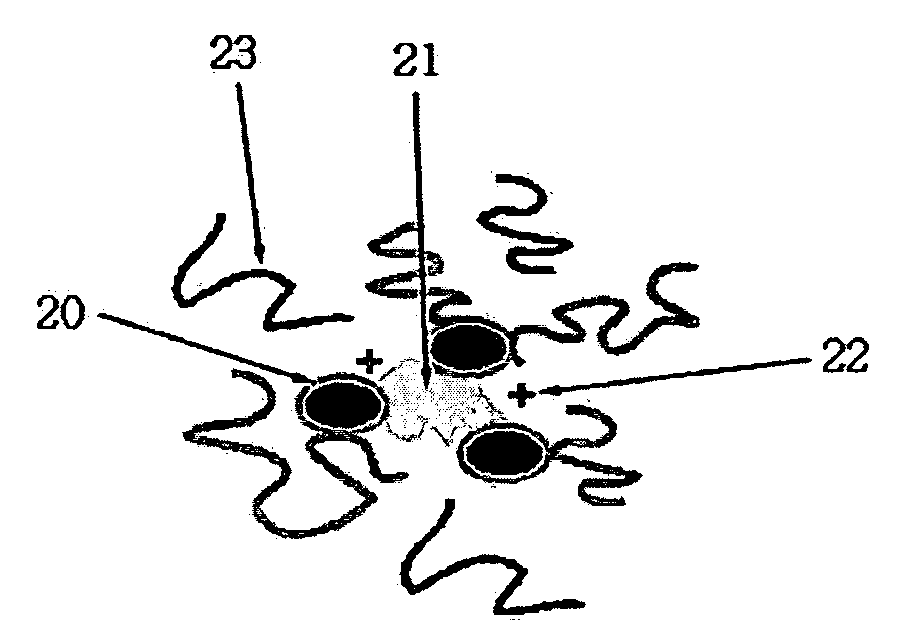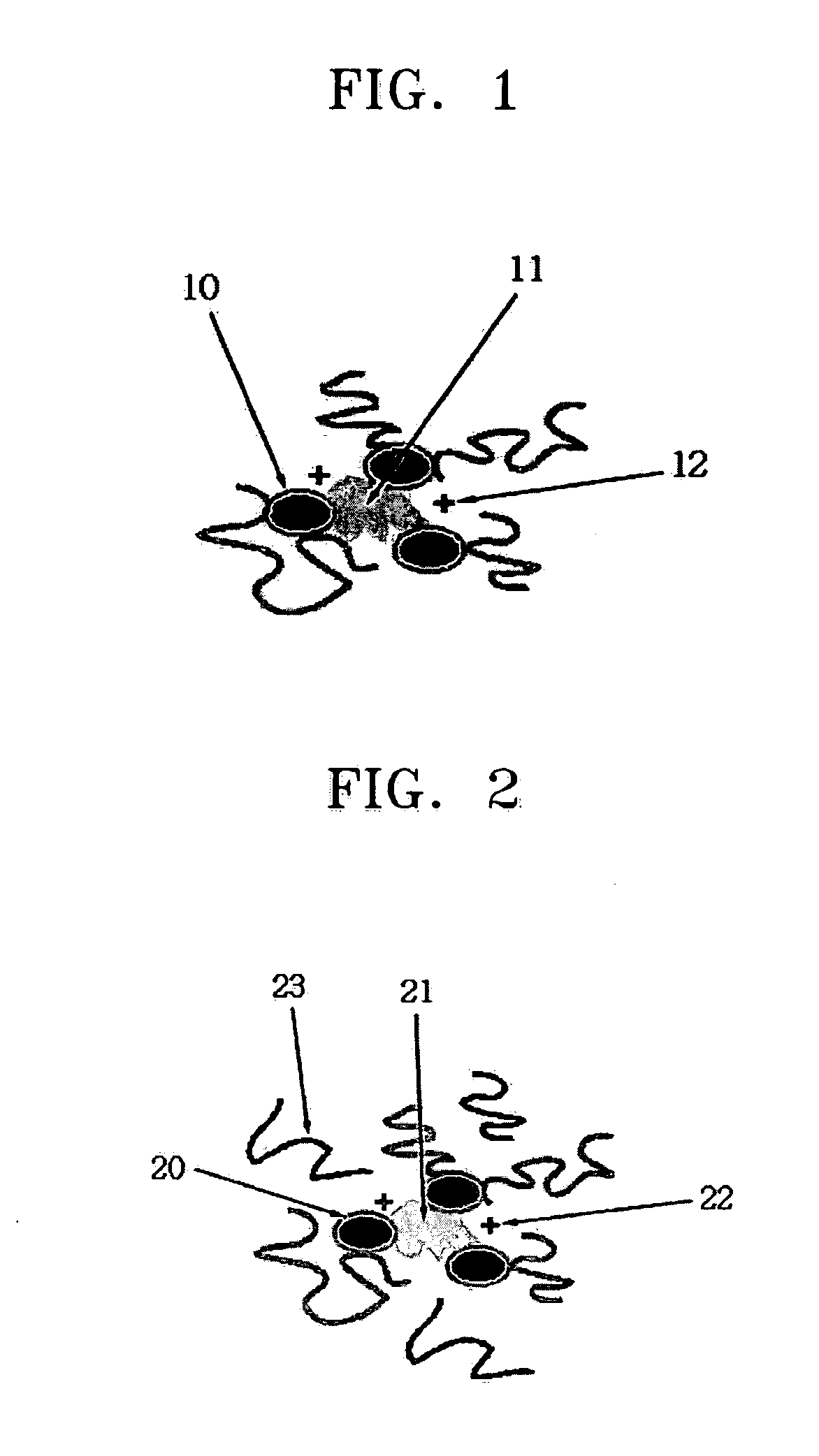Liquid toner for electrophotography and method of preparing the same
a liquid toner and electrophotography technology, applied in the field of electrophotography liquid toner and a method of preparing the same, can solve the problems of inability to print, introduce liquid toner, and inability to easily redistribute to its original state, and achieve the effect of low solidification rate and good redisperation
- Summary
- Abstract
- Description
- Claims
- Application Information
AI Technical Summary
Benefits of technology
Problems solved by technology
Method used
Image
Examples
preparation example 1
Preparation of an Organosol
[0043] (1) Preparation of a Graft Stabilizer
[0044] 2557 g of Norpar 12 (available from Exxon), 849 g of trimethyl cyclohexyl methacrylate (TCHMA), 27 g of 2-hydroxyethyl methacrylate (HEMA), and 13 g of dimethyl-2,2′-azobis(2-methylpropionate) (tradename: V601, available from Wako Chem, Japan) as a polymerization initiator were mixed and reacted for 16 hours while stirring at a rate of 250 rpm at 70° C. under a nitrogen gas atmosphere. Then, the reaction mixture was heated for 1 hour while stirring at a rate of 250 rpm at 90° C. to remove the residual polymerization initiator. 14 g of dibutyltin dilaurate (DBTDL available from Aldrich Chemical Co.) and 41 g of 3-isopropenyl dimethylbenzyl isocyanate (TMI available from CYTEC Industries) were added to the reaction mixture, and then the resulting mixture was reacted for 6 hours while stirring at a rate of 250 rpm at 70° C. under a nitrogen gas atmosphere to obtain the graft stabilizer. The prepared graft s...
preparation example 2
Preparation of a (meth)acrylic (co)polymer Soluble in a Carrier Liquid
[0047] 2557 g of Norpar 12 (available from Exxon), 849 g of trimethyl cyclohexyl methacrylate (TCHMA), 27 g of 2-hydroxyethyl methacrylate (HEMA), and 13 g of dimethyl-2,2′-azobis(2-methylpropionate) (tradename: V601, available from Wako Chem, Japan) as a polymerization initiator were mixed and reacted for 16 hours while stirring at a rate of 250 rpm at 70° C. under a nitrogen gas atmosphere. Then, the reaction mixture was heated for 1 hour while stirring at a rate of 250 rpm at 90° C. to remove a residual polymerization initiator.
example 1
Preparation of a Liquid Toner for Electrophotography According to the Present Invention
[0048] 435.2 g (solid weight ratio: 13%) of the organosol prepared in Preparation Example 1, 13.3 g (solid weight ratio: 25%) of a (meth)acrylic (co)polymer soluble in a carrier liquid, prepared in Preparation Example 2, 9.43 g of Cyan pigment PB 15:4 (available from Sun Chemical) as a colorant, 2.75 g (2.4%) of Zr-HEXEM as a charge controlling agent, and 139.5 g of Norpar 12 (available from Exxon) were placed in an attrition type milling apparatus, and then 1200 g of a zirconium bead was added thereto. Then, the mixture was milled at 42° C. for 3 hours while stirring at a rate of 5000 rpm to obtain the liquid toner for electrophotography.
PUM
 Login to View More
Login to View More Abstract
Description
Claims
Application Information
 Login to View More
Login to View More - R&D
- Intellectual Property
- Life Sciences
- Materials
- Tech Scout
- Unparalleled Data Quality
- Higher Quality Content
- 60% Fewer Hallucinations
Browse by: Latest US Patents, China's latest patents, Technical Efficacy Thesaurus, Application Domain, Technology Topic, Popular Technical Reports.
© 2025 PatSnap. All rights reserved.Legal|Privacy policy|Modern Slavery Act Transparency Statement|Sitemap|About US| Contact US: help@patsnap.com


